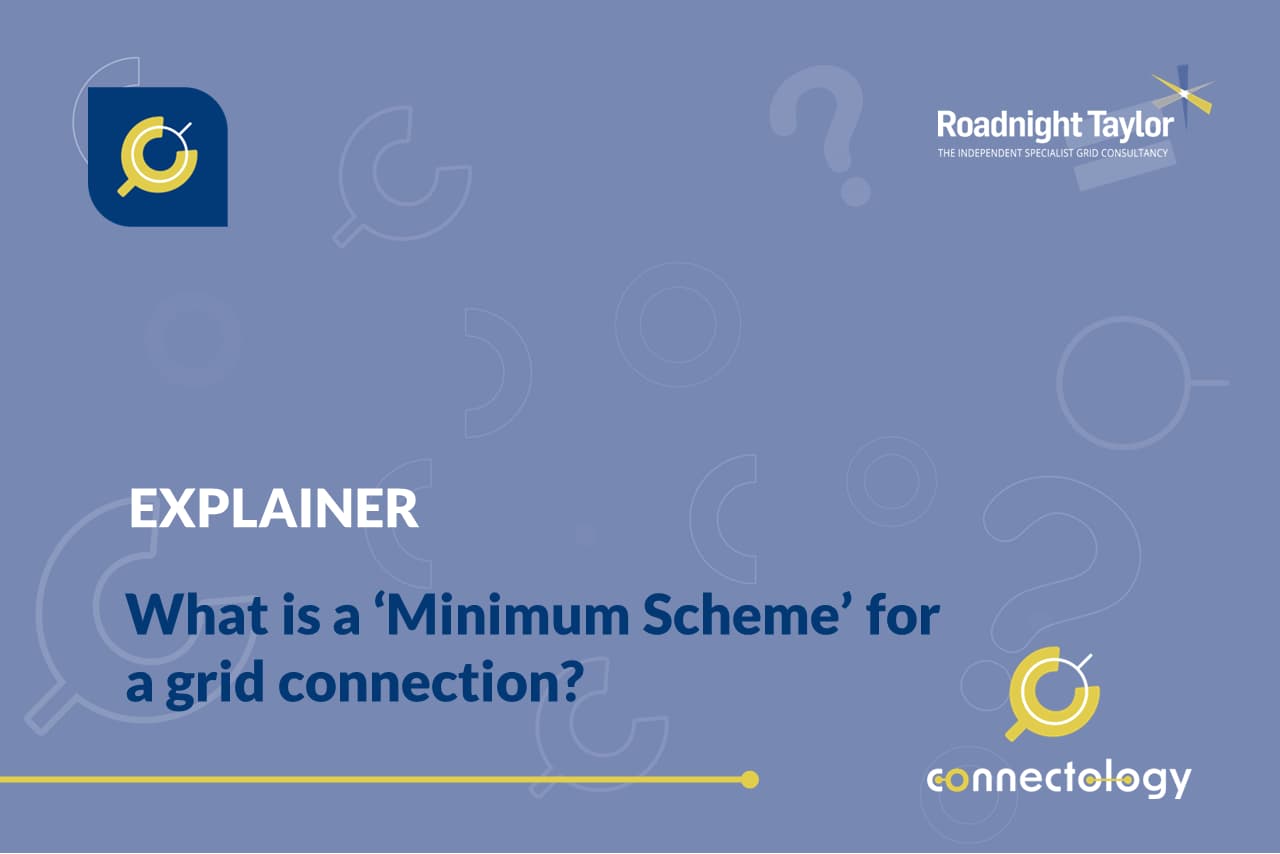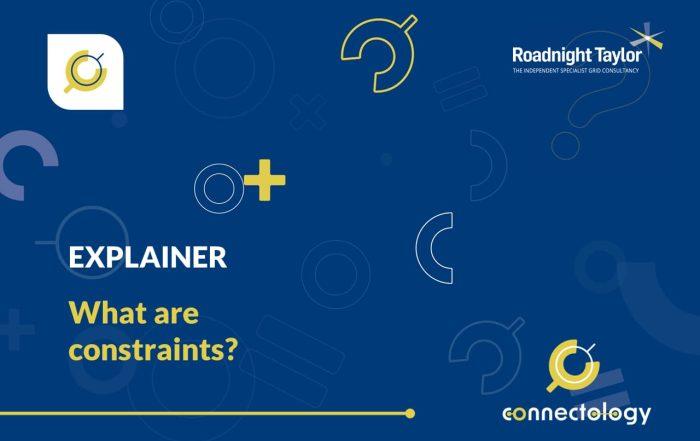What is a ‘Minimum Scheme’ for a grid connection?
The Minimum Scheme is the grid connection design that provides the required capacity at the lowest overall capital cost, as estimated by the Distribution Network Operator. It has its nuances though, and grid connection offers need to be examined carefully.
Article by Pete Aston – acknowledged expert in networks
Pete joined Roadnight Taylor from Western Power Distribution, the UK’s largest DNO, where he was Primary System Design Manager. He led a team of sixty responsible for all connections to the extra high voltage network, as well as leading WPD’s interaction with National Grid (NGET and NGESO) at the transmission/distribution boundary.
First written: 13 February 2023. Updated: 03 March 2025

When a Distribution Network Operator (DNO) prepares a grid connection offer, the design they use must meet the criteria of what is called the ‘Minimum Scheme’. Sometimes this is referred to as the ‘least cost scheme’. This article explains what is meant by this and how it affects the cost of the connection.
Minimum Scheme definition
The phrase Minimum Scheme is defined in the same way in Section 5 of the connection charging methodologies of each of the DNOs:
“The Minimum Scheme is the Scheme with the lowest overall capital cost (as estimated by us [the DNO]), solely to provide the Required Capacity.”
It sounds simple enough, but it contains a lot of nuance. The first thing to point out is that the Minimum Scheme does not mean the lowest cost to the connecting customer. It means the lowest overall cost.
A Minimum Scheme example
An example will highlight this. A customer wants to connect a 10MW solar farm to a 33kV network. The DNO identifies that there are two options to connect the solar farm.
Option 1
- Network extension works: Connect the solar farm to the nearest 33kV circuit – £0.5m
- Reinforcement works: Reinforce the 33kV circuit to prevent overloads – £1.5m
- Total cost: £2m
Option 2
- Network extension works: Connect the solar farm to the nearest substation – £1.5m
- Reinforcement works: None
- Total cost: £1.5m
It is clear that Option 2 at £1.5m is a lower scheme cost than Option 1 at £2m. To comply with the requirement to implement the Minimum Scheme, the DNO has to proceed with Option 2.
However, Option 1 would actually be cheaper for the customer. This is because the customer would only pay part of the £1.5m reinforcement charge because of the way reinforcement charges are apportioned based on capacity. But even though Option 1 is cheaper for the customer, the DNO has to offer Option 2.
Assumptions may need to be challenged
But what assumptions has the DNO used to estimate the various elements of cost in the two options? In Option 1, if the reinforcement works have been inflated, then it would distort the comparison in favour of Option 2. Equally, if the network extension works in Option 2 have been under estimated, it would make Option 2 look more favourable than Option 1.
One assumption that DNOs sometimes make is to be too optimistic on the assumed cable routes. The DNO might assume an almost direct route across fields from the site to the point of connection (POC) to give a very low predicted cost (to favour that option), whereas in reality a road route might be more likely. DNOs therefore sometimes need to be challenged over the assumptions they have made.
SCR effects on grid connection costs
The situation may require additional scrutiny following the implementation of the Access and Forward Looking Charges Significant Code Review (SCR) in 01 April 2023. Since this date, generation connections only pay for reinforcements at the same voltage level they are connected to, and demand customers don’t pay towards reinforcement at all.
This means that reinforcements of transformers or circuits at higher voltages which were currently funded to some extent by connecting customers, are fully funded by DNOs. Connecting generators or demands to a higher voltage level will therefore remove DNO reinforcement requirements on transformers, or will result in generators contributing to the reinforcement at the higher voltage levels.
Whilst no one is anticipating DNOs to deliberately manipulate the costing of options in their favour at an institutional level, there is clearly a temptation to offer new connections to higher voltage levels than is necessary. This will need careful assessment of connection solutions provided in offers, with a need to sometimes challenge the DNOs.
Contact us
Roadnight Taylor can help developers understand the connection charging methodologies and to assess whether the solutions provided in offers are in compliance with the regulations. To find out more call us on 01993 830571 or send us a message via our contact form.










